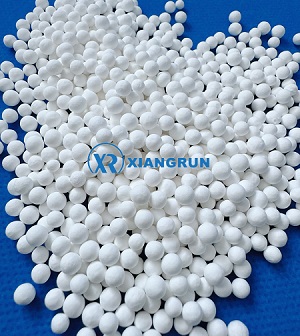Having worked in the alumina industry for many years, we've witnessed far too many production problems caused by improper desiccant selection or poor maintenance: unstable dew points in instrument air sources, valve freezing, product dampness, equipment corrosion... These problems not only affect production efficiency but also directly increase operating costs. Today, we'll delve into the core of the drying system—activated alumina adsorbents.
Does your equipment face the following problems?
• Equipment Corrosion: Wherever water reaches, pipes, cylinders, and valves become heavily rusted, drastically reducing their lifespan.
• Instrument Malfunction: Precision instruments may malfunction or crash due to icing or water accumulation, causing production interruptions.
• Process Contamination: In the painting, food, and pharmaceutical industries, moisture can directly lead to product spoilage.
• Soaring Energy Consumption: Low efficiency in humid air transmission increases equipment load, resulting in wasted electricity.
Refrigerated dryers alone are often insufficient, typically only lowering the pressure dew point to around 3°C. To achieve deep drying at -20°C, -40°C, or even -70°C, adsorption dryers are necessary, and the core of these dryers lies in high-performance activated alumina desiccant.
Why is activated alumina the "superior solution" for dryers?
Compared to adsorbents such as molecular sieves and silica gel, activated alumina exhibits unique comprehensive advantages in the drying field:
Comparison with molecular sieves: While molecular sieves offer strong deep drying capabilities in high-humidity environments, they are easily saturated by water and have high regeneration energy consumption. Activated alumina has a large moisture absorption capacity, strong resistance to liquid water, simpler regeneration, and lower energy consumption, representing a perfect balance between stability and economy.
Comparison with silica gel: Silica gel is prone to cracking and pulverizing in liquid water environments. Activated alumina has significantly higher mechanical strength than silica gel, is more wear-resistant, has a longer service life, and offers higher overall efficiency.
How to Choose High-Quality Activated Alumina for Your Dryer?
1. Static Adsorption Capacity: This directly determines how much water the adsorbent can absorb. Pay close attention to the adsorption capacity at 60% relative humidity. A higher value results in a longer drying cycle and lower energy consumption.
2. Crushing Resistance: This determines how long the adsorbent can "survive." Choosing a product with high strength (refer to the manufacturer's data for specific values) effectively resists bed pressure drop and prevents pulverization and pipe blockage.
3. Particle Size Uniformity: Uniform particle size ensures even airflow distribution, avoids channeling and short-circuiting, allowing each alumina particle to fully function, achieving optimal drying effect and energy efficiency.
We have been deeply involved in the alumina industry for many years, producing not only high-quality activated alumina desiccants that meet or exceed industry standards, but also a professional technical support team. If you are troubled by drying problems or wish to optimize your existing drying system, please feel free to contact us. Zibo Xiangrun Environmental Engineering Co., Ltd. – a professional alumina manufacturer.













